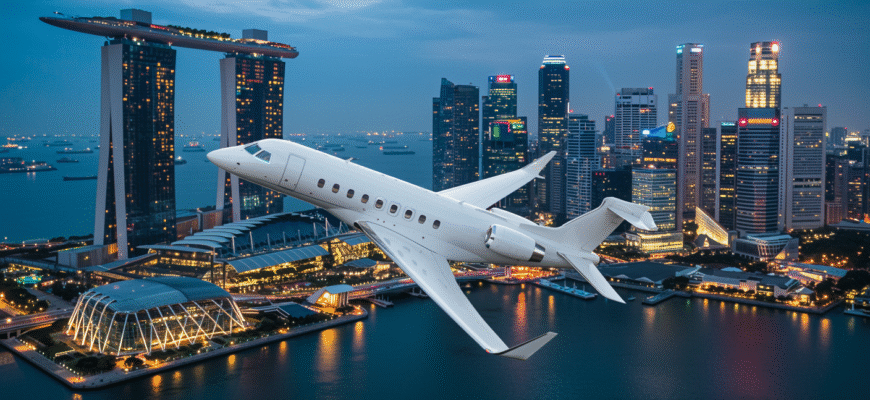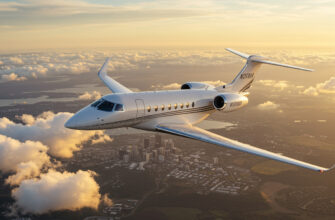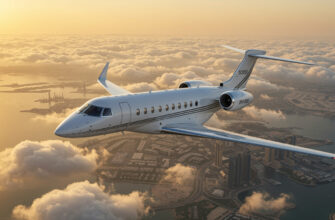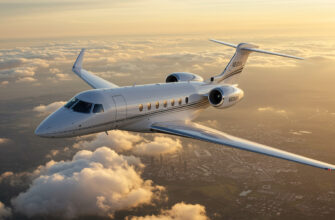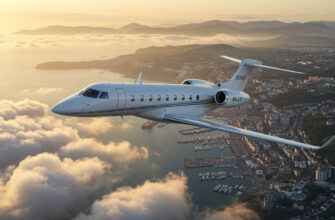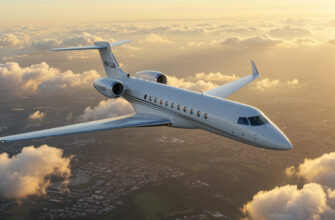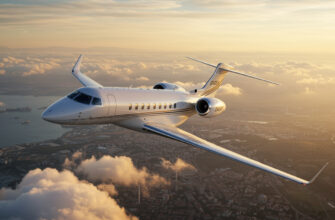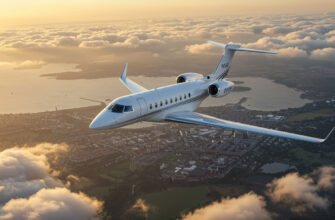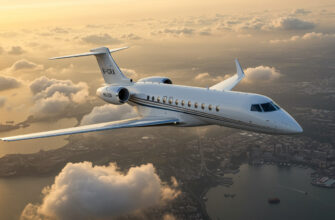While most people think Singapore’s luxury status is all about five-star hotels and rooftop infinity pools, the real secrets play out on the tarmac. This city-state is one of the busiest private jet hubs in Asia — not just because it’s well-connected or sparklingly clean, but because it really knows how to deliver privacy, convenience, and premium everything. Billionaires, low-profile royals, corporate bosses, and celebrities often skip the commercial chaos by flying in and out of Singapore in absolute discretion. And they’re doing it more than you might realize.
What makes it even more standout? Seletar Airport. Unlike the hustle of Changi International, Seletar gives VIPs their own dedicated terminal, customs, and ramp access. You don’t just breeze past lines — you avoid them completely. And while Changi itself offers premium services through JetQuay’s CIP terminal, it’s Seletar that’s quietly handling the private jet elite, especially during major events like the Formula 1 Grand Prix. So yeah, while everyone else is stuck queuing up for immigration, the ultra-rich are already sipping rare whiskey in an executive lounge — or mid-air, wrapped in Egyptian cotton at 40,000 feet.
What Makes Singapore A Private Jet Powerhouse
Some cities are known for skyscrapers. Others for shopping. Singapore? Try being the go-to for billionaires who want smooth takeoffs and five-star landings. It’s no accident this small island nation has become a magnet for private jet traffic. A few key things set it apart:
- Seletar Airport: Singapore’s dedicated private aviation airport that’s quiet, modern, and equipped with its own immigration and customs clearance. Elite flyers hit the runway within minutes of arrival.
- Discreet luxury at Changi: When private jet operators use Changi, services like JetQuay CIP make sure passengers enjoy maximum privacy and fast-track efficiency.
- The clientele: Think tech moguls flying in from Silicon Valley, Southeast Asian billionaires with sprawling empires, K-pop stars heading to Japan, and families who prefer not to be noticed.
Whether it’s a last-minute business trip or an island-hopping getaway, the infrastructure isn’t just convenient — it’s built specifically for VIP comfort, efficiency, and serious discretion.
How Much Does A Private Jet To/From Singapore Really Cost?
Private jet pricing isn’t like airline tickets — there’s no “round trip economy saver fare.” Instead, fees depend on distance, aircraft, schedule preference, and even crew rest laws. Still, here are some quick examples that give you a feel.
| From | To | Aircraft Type | Estimated One-Way Cost (USD) |
|---|---|---|---|
| London | Singapore | Ultra Long Range | $103,000 – $200,000 |
| Dubai | Singapore | Ultra Long Range | $78,000 |
| Jakarta | Singapore | Midsize Jet | $16,000 |
| Bangkok | Singapore | Super Midsize | $22,000 |
| Sydney | Singapore | Heavy Jet | $65,000 |
Prices vary based on time of year, airport traffic, and extras.
Here’s what else goes on the bill that people often forget:
– Crew overnight stay: Longer trips may require crew rest accommodations — usually in luxury hotels nearby.
– Repositioning charges: If the jet has to fly empty to pick you up or return, that extra flight time counts.
– Airport fees: Think landing permits, parking, slot coordination — especially tricky at busy airports like Tokyo or Hong Kong.
– Catering & elite add-ons: Onboard sushi chefs, Dom Pérignon, pet passports — these aren’t included unless specifically arranged.
And hourly rates? Here’s a rough breakdown:
- Light jets (short regional hops): $4,000–$5,000/hour
- Midsize jets (Jakarta, KL, Bali): $12,000–$16,000/hour
- Heavy/Ultra-long-range (London, NYC): $18,000+/hour
Booking a jet is more like customizing a luxury experience. You pick the aircraft, the cabin layout, the wine at 41,000 feet — and the cost adds up accordingly.
Most Booked Routes From Singapore For Private Jet Travelers
Some people book last-minute seats on commercial airlines. Others chart their own flight path — literally. From Singapore, a few routes come up again and again. These are the ones private jet travelers can’t seem to quit:
- Long Haul: Singapore–London and Paris stay hot, especially with ultra-long-range aircraft that can fly them non-stop. New York, while less frequent, is high demand when it comes to business expansions and tech investments.
- Regional Escapes: Short and sweet hops to Bali, Phuket, Kuala Lumpur, and Hong Kong are among the most frequent. Perfect for weekend getaways or business meetings with minimal disruption.
- High-Volume Events: Flight traffic spikes during the Singapore Grand Prix, Davos-related travel, Lunar New Year, and December holidays. It’s common for every available VIP aircraft to be fully booked weeks in advance.
Seletar becomes the VIP nerve center during these times, and if you’re not on top of your schedule, you might end up paying triple or stuck flying commercial — which is basically a private flyer’s worst nightmare.
Inside The Cabin: What You’re Actually Paying For
People talk a lot about costs — but what does that hundred-thousand-dollar ticket actually get you besides bragging rights? A lot, actually.
Start with aircraft interiors. A Gulfstream G650 offers private staterooms, a galley that rivals Michelin kitchens, and soundproofing so thick, you’ll forget you’re airborne. The Global 7500 is known for its range and custom layouts — including full dining rooms. And the Falcon 8X? Its wide-body design is a crowd-pleaser for the corporate set flying long routes.
Catering isn’t your average in-flight meal. Think:
- Custom-tasting menus with onboard chefs
- Vintage wines paired mid-flight
- Fusion bites or hawker-style Singaporean food for homesick billionaires
Want a massage on board? It’s possible. So is having a multilingual crew trained to pamper without hovering. Some jets have flying concierges who sort out everything — from dinner reservations post-landing to emergency last-minute gifts.
In short, you’re not just buying flight time. You’re buying peace, presence, and the power to travel like time doesn’t exist.
Aircraft Showdown: Which Jet Works Best For Your Journey?
Trying to decide between a Gulfstream G650 or a Global 7500 for your next ultra-long-haul flight is like choosing between a penthouse and a sky villa. Both are built for comfort, speed, and distance — ideal if you’re heading back to Singapore from London or LA. But here’s where they differ: the Global 7500 edges ahead slightly in range and cabin space, while the G650 wins on speed and shorter landing capability.
For shorter flights — think Singapore to Jakarta, Bali, or Kuala Lumpur — the HondaJet and Citation XLS+ are like the Teslas of the skies. Small, fast, efficient, and surprisingly luxe for their size. You’re in and out in under two hours, often skipping crowded terminals completely.
So how does one compare planes, really? Focus on:
- Cabin layout: Want lie-flat beds or just plush seating?
- Range: Is it nonstop or will you have to refuel?
- Speed: Time-sensitive trips favor faster cruises.
- Runway access: Larger jets might not land where you want—especially on smaller islands.
One underrated factor? Fleet age. An 11-year-old jet might still fly safely, but inside, the wear shows — creaky drawers, pixelated screens, dated scent hedging from old leather. Elite flyers now specifically ask for “new cabin refurb” or jets under five years old to match the luxury they’re paying for.
How to Book a Private Jet in or out of Singapore — Safely
What’s safer: calling a direct broker or punching in a request on a charter app? If your time matters and you want a real human to vouch for the operator, direct brokers win. Charter platforms are fast — but sometimes too fast. They push the “quick quote” before verifying safety records or aircraft availability. And that’s where people mess up.
Before you hit confirm, ask these dead-simple questions:
- Is the operator legally certified with an AOC?
- Is the aircraft insured and maintained by the operator, not just sourced?
- Can you speak to a real person about the crew, aircraft age, and itinerary flexibility?
Fastest quote doesn’t always mean safest. Neither does flashiest photo. Trust, not just price, should drive the decision. In Singapore, illegal or “grey” charters still pop up — they’re cheaper because they skip safety corners. Don’t be the one who finds out mid-air that something isn’t right.
Secrets of Singapore’s Private Jet Community
The mainstream knows Seletar’s VIP terminal. The insiders know what’s behind the velvet curtain. Some lounges aren’t even advertised — you’ll only hear about them through a friend who’s flown out with a Fortune 500 exec en route to Monaco.
Then there’s the holy grail: empty leg deals. Last-minute one-ways when a jet needs to reposition. A $60,000 flight could go for under $20,000 — if you’re in the right WhatsApp group or have a savvy broker who owes you a favor. Apps try to automate this, but the best discounts stay behind closed doors.
Different travelers also play the game in different ways. Some rent by the hour — pay once, no strings. Others subscribe monthly with “jet cards” or club memberships that guarantee time and perks. For frequent fliers out of Singapore, these memberships often unlock the real perks: guaranteed aircraft availability, free upgrades, or blackout-free holiday travel.
When Timing Is Everything
Booking last minute out of Singapore? It could cost more than just extra cash. Air traffic congestion at Seletar can create serious puzzle pieces for jet operators — especially during F1 week or Chinese New Year. Weather, too, becomes a wildcard.
If you can, book 72+ hours in advance. Flex on departure times. Even switching airports — Seletar vs. Changi — could save that last-minute delay and headache once runway slots disappear into the wind.
